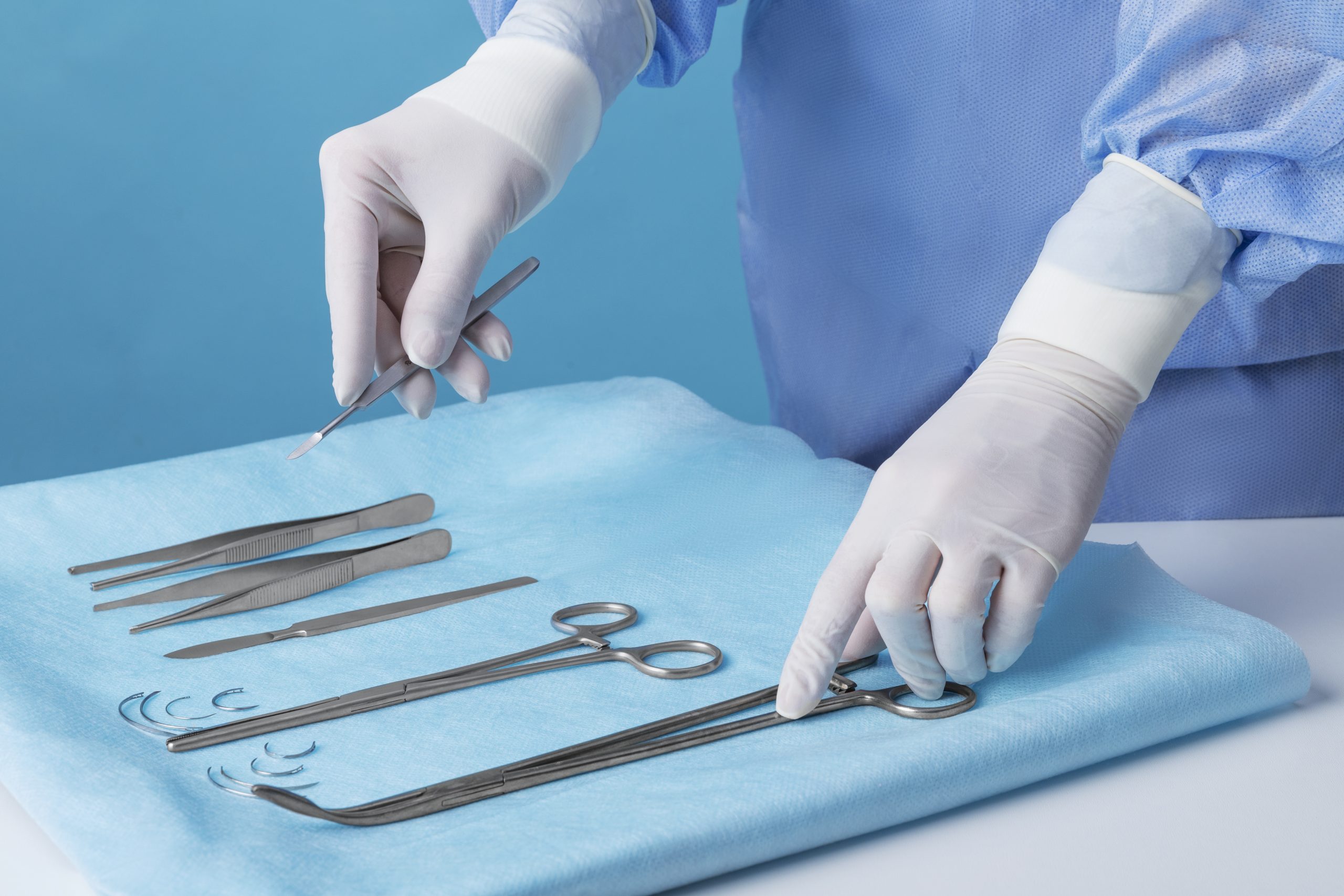Are you unhappy with the appearance of your jawline? Do you struggle with bite problems or difficulty chewing? If so, you’re not alone. Micrognathia, a condition where the jaw is undersized and causes functional and aesthetic issues, affects many individuals. Fortunately, orthognathic surgery offers a powerful solution to transform your jaw and improve your overall quality of life.
Orthognathic surgery, also known as corrective jaw surgery, is a procedure that involves repositioning the jaw to correct functional problems such as bite misalignment, difficulty speaking, and breathing issues. Additionally, it can enhance facial symmetry and improve the overall appearance.
This transformative surgery is performed by highly skilled oral and maxillofacial surgeons who specialize in managing the complex structure of the jaw. By utilizing advanced techniques and state-of-the-art technology, these experts can unlock the power of orthognathic surgery, providing patients with life-changing results.
If you’ve been struggling with the challenges of micrognathia, don’t despair. Unlock the power of orthognathic surgery and take the first step towards a confident smile and improved oral health. Consult with a trusted oral and maxillofacial surgeon to learn more about this life-changing procedure.
Understanding micrognathia and its impact on oral health
Micrognathia is a condition characterized by an undersized jaw, which can cause a variety of functional and aesthetic issues. The jaw plays a crucial role in our daily lives, affecting our ability to bite, speak, and chew properly. When the jaw is not properly aligned or is too small, it can lead to bite misalignment, difficulty speaking, and even breathing problems.
One of the key impacts of micrognathia is the strain it places on the temporomandibular joint (TMJ). The TMJ connects the jawbone to the skull and allows for smooth movement of the jaw when we eat, speak, or yawn. When the jaw is misaligned or undersized, the TMJ can become overworked, leading to chronic pain, jaw clicking, and even headaches.
In addition to the functional issues, micrognathia can also have a significant impact on a person’s self-esteem and overall confidence. The undersized jaw can create an unbalanced facial profile, affecting the harmony and symmetry of the face. This can lead to feelings of self-consciousness and dissatisfaction with one’s appearance.
Orthognathic surgery offers a powerful solution to address these issues. By repositioning the jaw and correcting the underlying structural problems, this procedure can improve both the functional and aesthetic aspects of micrognathia. Let’s dive deeper into how orthognathic surgery works and the benefits it can provide for patients with micrognathia.
What is orthognathic surgery and how does it work
Orthognathic surgery, also known as corrective jaw surgery, is a complex procedure that involves repositioning the jaw to correct functional problems and enhance facial aesthetics. It is typically performed by highly skilled oral and maxillofacial surgeons who specialize in managing the complex structure of the jaw.
Before undergoing orthognathic surgery, a thorough evaluation and planning process is conducted. This includes a comprehensive examination of the patient’s jaw structure, dental occlusion, and facial aesthetics. Advanced imaging techniques such as 3D CT scans are often used to create a detailed map of the patient’s jaw and facial structure.
During the surgery, the oral and maxillofacial surgeon carefully adjusts the position of the jaw to achieve proper alignment and symmetry. This may involve repositioning the upper jaw, lower jaw, or both, depending on the specific needs of the patient. The surgeon may also make use of bone grafts or implants to improve the overall structure and stability of the jaw.
The procedure is typically performed under general anesthesia to ensure the patient’s comfort and safety. The duration of the surgery can vary depending on the complexity of the case, but it generally ranges from a few hours to several hours. After the surgery, the patient will require a period of recovery and follow-up care to ensure optimal healing and long-term results.

Benefits of orthognathic surgery for micrognathia patients
Orthognathic surgery offers a range of benefits for individuals with micrognathia, both in terms of functional improvements and enhanced facial aesthetics. Let’s explore some of the key advantages this transformative procedure can provide:
1. Improved bite alignment and chewing function
One of the primary goals of orthognathic surgery is to correct bite misalignment caused by micrognathia. By repositioning the jaws, the surgeon can achieve proper occlusion, allowing the teeth to fit together correctly. This improves the bite alignment and enhances the patient’s ability to chew food effectively. With a properly aligned bite, patients can enjoy a wider variety of foods and experience improved digestion.
2. Enhanced speech and breathing
Micrognathia can affect the position of the tongue and impact speech clarity. By repositioning the jaws, orthognathic surgery can create more space in the oral cavity, allowing for improved tongue movement and better speech articulation. Additionally, for patients experiencing breathing difficulties due to a small jaw, orthognathic surgery can help to open up the airway and improve airflow, leading to better overall breathing.
3. Facial symmetry and aesthetic improvements
Orthognathic surgery not only corrects functional issues but also improves the overall facial aesthetics for individuals with micrognathia. By repositioning the jaw, the surgeon can achieve a more harmonious facial profile, enhancing the symmetry and balance of the face. This can have a significant impact on a person’s self-esteem and confidence, allowing them to feel more comfortable and satisfied with their appearance.
4. Long-term stability and oral health benefits
Orthognathic surgery is designed to provide long-term stability and lasting results. By addressing the underlying structural problems, the surgery can help prevent future issues such as TMJ disorders, tooth wear, and gum problems. The improved bite alignment and proper jaw positioning also contribute to better oral hygiene, making it easier to maintain oral health and reduce the risk of dental problems.
5. Improved quality of life
Perhaps the most important benefit of orthognathic surgery is the overall improvement in the quality of life for individuals with micrognathia. By addressing the functional and aesthetic concerns, this transformative procedure can significantly enhance a person’s self-confidence, social interactions, and overall well-being. It can open doors to new opportunities and allow individuals to live their lives to the fullest, free from the limitations imposed by micrognathia.
In conclusion, orthognathic surgery offers a powerful solution for individuals struggling with the challenges of micrognathia. By repositioning the jaw and correcting the functional and aesthetic issues, this transformative procedure can unlock a confident smile and improved oral health. If you are dealing with micrognathia and its associated problems, consult with a trusted oral and maxillofacial surgeon to explore the possibilities of orthognathic surgery and take the first step towards a better quality of life.
The Process of Orthognathic Surgery
Orthognathic surgery is a multi-phase process that involves careful planning, precise execution, and post-operative care. Understanding each phase is essential for patients considering this transformative procedure.
Pre-operative Phase
The pre-operative phase of orthognathic surgery is crucial for achieving the best possible outcome. It begins with an initial consultation with an oral and maxillofacial surgeon who will evaluate your jaw structure, facial aesthetics, and functional issues. This assessment may involve X-rays, photographs, and computerized imaging to create a comprehensive treatment plan.
Once the treatment plan is established, the pre-operative phase also involves preparing for the surgery itself. This may include a thorough dental examination, orthodontic treatment to align the teeth, and necessary medical tests to ensure you are in optimal health for the procedure.
During this phase, it’s important to maintain open communication with your surgeon and address any questions or concerns you may have. This will help you feel confident and prepared for the upcoming surgery.
Surgical Phase
The surgical phase is the main event of orthognathic surgery, where the actual repositioning of the jaw takes place. This phase is typically performed under general anesthesia to ensure your comfort and safety throughout the procedure.
The oral and maxillofacial surgeon will make incisions inside the mouth to access the jawbone. They will then carefully reposition the jaw, aligning it with the desired aesthetics and functional goals determined during the pre-operative phase. In some cases, bone grafts or implants may be used to enhance stability or achieve the desired facial symmetry.
While the surgery itself may take several hours, it is important to remember that the length of the procedure can vary depending on the complexity of the case. The surgeon’s expertise, coupled with advanced technology and techniques, will ensure the surgery is performed with precision and accuracy.
Post-operative Phase
The post-operative phase is a crucial period for recovery and ensuring the success of the surgery. After the procedure, you will be closely monitored in a recovery area until you are awake and stable. Pain medication will be provided to manage any discomfort, and you may have a nasogastric tube to assist with nutrition and hydration.
Swelling and bruising are normal after orthognathic surgery and can vary in severity depending on the individual. Your surgeon will provide specific instructions on how to manage these symptoms, including the use of ice packs, head elevation, and prescribed medications.
During this phase, it is important to follow your surgeon’s post-operative instructions diligently. This may include a modified diet, oral hygiene practices, and restrictions on physical activities. Regular follow-up appointments will be scheduled to monitor your progress and make any necessary adjustments to your treatment plan.
Recovery and Aftercare Following Orthognathic Surgery
The recovery period following orthognathic surgery is a significant part of the overall treatment process. While each patient’s recovery may vary, there are general guidelines to follow for a smooth healing process.
Managing Pain and Discomfort
Pain and discomfort are common after orthognathic surgery, but they can be effectively managed with prescribed medications. It is important to take these medications as directed by your surgeon to stay ahead of any potential discomfort. Applying ice packs to the affected area can also help reduce swelling and provide relief.
Modified Diet
Following orthognathic surgery, your diet may be limited to soft, non-chewy foods to ensure proper healing of the jaw. Your surgeon will provide specific dietary guidelines to follow during the initial weeks of recovery. It is crucial to avoid hard, crunchy, or sticky foods that may disrupt the healing process or damage the surgical site.
Oral Hygiene Practices
Maintaining good oral hygiene is essential for preventing infections and promoting healing. Your surgeon will provide instructions on how to clean your mouth and surgical site during the recovery period. This may involve gentle rinsing with a prescribed mouthwash and avoiding vigorous brushing or flossing around the surgical area.
Physical Activity Restrictions
To promote optimal healing, it is important to avoid strenuous physical activities during the initial weeks of recovery. Your surgeon will provide specific guidelines regarding restrictions on lifting heavy objects, engaging in high-impact exercises, or participating in contact sports. It is crucial to follow these restrictions to prevent any complications or setbacks during the healing process.
Follow-up Appointments
Regular follow-up appointments with your surgeon are essential for monitoring your progress and making any necessary adjustments to your treatment plan. These appointments will allow your surgeon to assess your healing, remove any sutures, and address any concerns or questions you may have. It is important to attend these appointments as scheduled to ensure the best possible outcome.

Potential Risks and Complications of Orthognathic Surgery
As with any surgical procedure, orthognathic surgery carries potential risks and complications. While these risks are relatively rare, it is important to be aware of them before making an informed decision about undergoing the procedure. Your surgeon will discuss these risks with you during the consultation phase to ensure you have a comprehensive understanding.
Infection
Infection is a potential risk following orthognathic surgery, although it is rare. Your surgeon will take precautions to minimize the risk of infection during the procedure and provide instructions on how to prevent infections during the recovery period. It is important to closely follow these instructions, maintain good oral hygiene, and promptly report any signs of infection to your surgeon.
Nerve Damage
There is a risk of temporary or permanent nerve damage during orthognathic surgery, which can result in numbness or altered sensation in the face, lips, or tongue. Your surgeon will take precautions to minimize the risk of nerve damage, but it is important to be aware of this potential complication. In most cases, any nerve-related symptoms improve over time, but it is important to discuss this risk with your surgeon.
Relapse
While orthognathic surgery aims to achieve long-lasting results, there is a possibility of relapse, especially if post-operative instructions are not followed diligently. Your surgeon will provide specific guidelines on wearing orthodontic appliances and maintaining oral hygiene to prevent relapse. It is essential to adhere to these instructions to maximize the success of the surgery.
Unfavorable Scarring
Orthognathic surgery involves incisions inside the mouth, which typically result in minimal visible scarring. However, individual healing and scarring patterns can vary. While the surgeon will take care to ensure discreet incisions, it is important to discuss scarring concerns with your surgeon during the consultation phase.
Other Potential Complications
Other potential complications of orthognathic surgery include bleeding, blood clots, jaw joint issues, and changes in bite or speech. These complications are relatively rare but should be discussed with your surgeon to ensure a comprehensive understanding of the procedure.
Finding the right orthodontist and oral surgeon for your orthognathic surgery
Choosing the right orthodontist and oral surgeon is crucial when considering orthognathic surgery. These professionals play a vital role in planning and executing the procedure, ensuring the best possible outcome for each patient.
When searching for an orthodontist, it is important to find one with experience in treating micrognathia. Look for a specialist who has a proven track record in orthognathic surgery and a deep understanding of the unique challenges associated with micrognathia. Schedule consultations with multiple orthodontists to discuss your specific case and treatment options. This will allow you to find a professional who makes you feel comfortable and confident in their expertise.
Equally important is finding an oral and maxillofacial surgeon who specializes in corrective jaw surgery. This surgeon should have extensive experience in performing orthognathic procedures and a thorough understanding of the intricacies of the jaw structure. Research the surgeon’s qualifications, credentials, and patient reviews to gauge their expertise and success rate. During the consultation, ask about the surgeon’s approach to orthognathic surgery and their plan for your specific case. This will give you a better understanding of their expertise and whether they are the right fit for your needs.
Remember, finding the right orthodontist and oral surgeon is essential for a successful orthognathic surgery. Take the time to research and consult with multiple professionals to ensure you receive the best possible care.
Cost and insurance coverage for orthognathic surgery
Orthognathic surgery is a complex procedure that requires the expertise of specialized professionals and the use of advanced technology. As such, it is important to consider the cost and insurance coverage associated with this surgery.
The cost of orthognathic surgery can vary depending on factors such as the complexity of the case, the surgeon’s experience, and the region where the procedure is performed. It is essential to consult with your oral and maxillofacial surgeon and orthodontist to obtain an accurate estimate of the overall cost. They can provide a breakdown of the expenses involved, including pre-operative assessments, surgical fees, hospital fees, anesthesia, and post-operative care. Understanding the cost associated with orthognathic surgery will help you plan for the financial aspect of the procedure.
Insurance coverage for orthognathic surgery varies among providers and policies. It is important to contact your insurance company to determine whether orthognathic surgery is covered under your plan. Some insurance plans may cover a portion of the cost if the surgery is deemed medically necessary. However, coverage may be subject to specific criteria and pre-authorization requirements. Be sure to gather all the necessary information from your insurance provider and work closely with your surgeon’s office to navigate the insurance process.
If insurance coverage is not available or insufficient, there may be financing options available to help manage the cost of orthognathic surgery. Many surgeons offer payment plans or can provide information on medical financing companies that specialize in healthcare expenses. It is essential to explore these options and find a solution that works best for your financial situation.

Conclusion and future advancements in orthognathic surgery for micrognathia patients
Orthognathic surgery has emerged as a powerful solution for individuals with micrognathia, offering a path to improved functionality, aesthetics, and overall quality of life. Through the expertise of oral and maxillofacial surgeons and orthodontists, patients can unlock the potential of this transformative procedure.
As technology and surgical techniques continue to advance, the future of orthognathic surgery looks promising. Ongoing research and innovation aim to further enhance surgical outcomes, reduce recovery times, and streamline the overall process. For micrognathia patients, this means even greater possibilities for achieving their desired results.
If you’re struggling with micrognathia or its associated challenges, don’t hesitate to explore the option of orthognathic surgery. Consult with a trusted oral and maxillofacial surgeon to discuss your specific case and treatment options. With their expertise and the power of orthognathic surgery, you can take the first step towards a confident smile, improved oral health, and a better quality of life.
Consider the success stories, find the right professionals, understand the cost and insurance coverage, and embrace the future advancements in orthognathic surgery. Unlock the power of orthognathic surgery and transform your life today.






